We Shop Dentists, So You Don’t Have To!
DENTAL SERVICES
Dental Services You Can Find On Our Site!
Each office recognized by Arizona’s Best Dentists provides all of the services listed on this page. One of the qualifying factors for a featured office is the convenience of a wide-range of services at the highest level of care, eliminating extra trips to specialists.

By definition, cosmetic dentistry is the side of dental care that focuses on the overall appearance of your teeth and mouth. Instead of making repairs for medical reasons, almost all cosmetic procedures are done as elective treatment, meaning it is not required in order to live a regular, healthy life. However, this definition doesnt make cosmetic dentistry any less important by medical and dental standards. In fact, many kinds of cosmetic dental treatment can actually enhance the overall function of your teeth.
Most cosmetic dental procedures involve a combination of services unique to your situation and desired outcome. Depending on your smile, you may need to consider veneers, bonding, bridges, implants, tooth whitening, and/or orthodontics*.

Cosmetic repairs and enhancements are performed using the latest technology available. The best professionals are those trained in preserving and utilizing as much of your natural tooth structure as possible without sacrificing your results or comfort.
Frequently cosmetic dental treatment is thought to be too expensive to even consider. This is a misconception. Most offices offer flexibility in payment plans and insurance processing. This means that getting the smile you deserve doesn’t have to be a dream set aside for the future.

Cosmetic dentistry is about more than just repairing damage done to your teeth through time, lifestyle, or diet – its about making your smile a reflection of what you feel inside. Whether youre looking for restorative cosmetic dental work or an elective procedure to gain more confidence in your smile, the result can be a boost to your physical and emotional health.
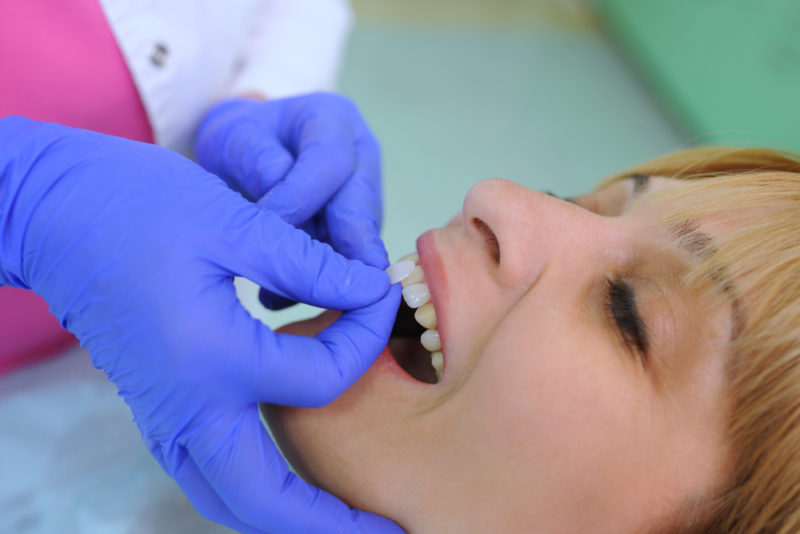
Veneers are thin, tooth-shaped pieces of porcelain that are bonded to the visible part of your teeth – primarily the front teeth. By adhering to the existing enamel, veneers are able to maintain the strength of your original teeth while adding a completely new, white exterior. When done correctly, they are undetectable and mimic the light-reflecting properties of natural teeth. An additional bonus is that the porcelain in the veneers is stain-resistant, so if you continue to smoke, drink coffee or tea, or drink wine, you are less likely to see a change in the color over time.
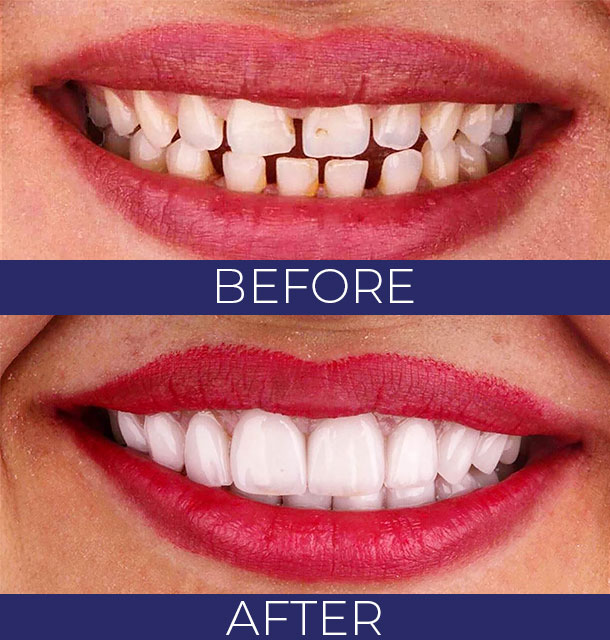
Each office recognized by Arizona’s Best Dentists* provides all of the services listed on this page. One of the qualifying factors for a featured office is the convenience of a wide-range of services at the highest level of care, eliminating extra trips to specialists.
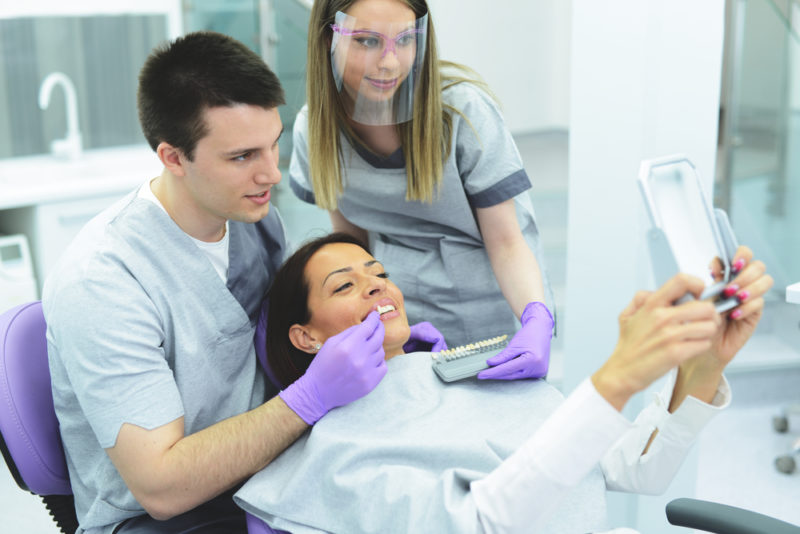
Veneers are a great way to give a perfect finish to your smile. Thanks to innovative techniques and attention to detail, almost any cosmetic problem can be corrected using the latest veneer procedures even something as simple as discoloration or as complex as misaligned teeth.
Most patients can go through the entire process in as little as two or three weeks. The first appointment is used to make a model of your existing teeth to create a best fit scenario for your future smile. During the next visit, your teeth are shaped to prepare them for the new porcelain finish, and your dentist will attach temporary veneers while the lab creates the permanent replacements. The final visit is when the true transformation takes place, as your permanent veneers are put into place. The results are instantaneous, and you will walk out the door with a new, natural-looking smile.
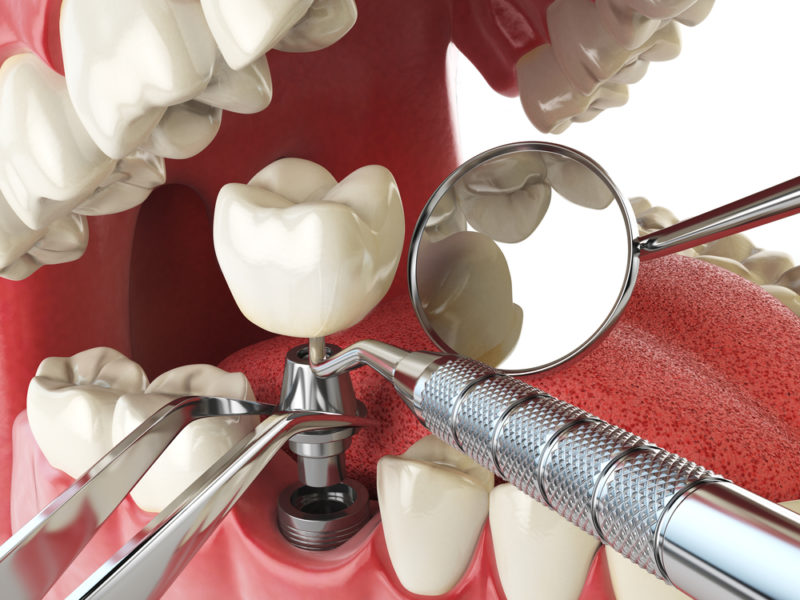
Dental implants are replacement teeth made from titanium. They are used to either replace a tooth or be used as an anchor for a denture/partial denture to snap into to keep it from shifting while talking or chewing. Implants preserve your bone. Without teeth, the bone that supports your overlying facial structure begins to melt away and can make you appear older than you are. Implants slow down this process, allowing you to maintain your youthful appearance.
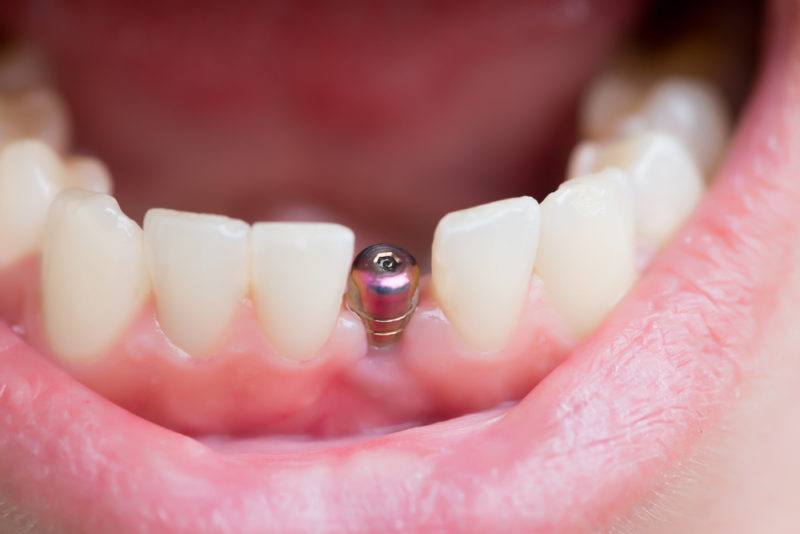
For people who wear dentures… no other procedure in dentistry has such a profound impact upon function and quality of life as replacing a poor fitting and poor functioning denture with teeth that are fixed to the jaw. The most appreciative patients are those who can smile, talk and chew again with confidence.
For people who wear partial dentures… anyone who has experienced the embarrassment of a loose fitting partial denture appreciates the options that implant dentistry provides. Replacing partials with implant supported teeth which are fixed and stable is healthier for the remaining teeth. Implants can be used to anchor removable partials or can replace them all together.
For people who have lost one or two teeth… the familiar treatment for replacing a missing tooth is to fill the space with a bridge. The disadvantage of a bridge is that it requires drilling unnecessarily on other teeth. It is also more difficult to clean under a bridge. Since having an implant is like having your own tooth back, flossing between the teeth is easy.
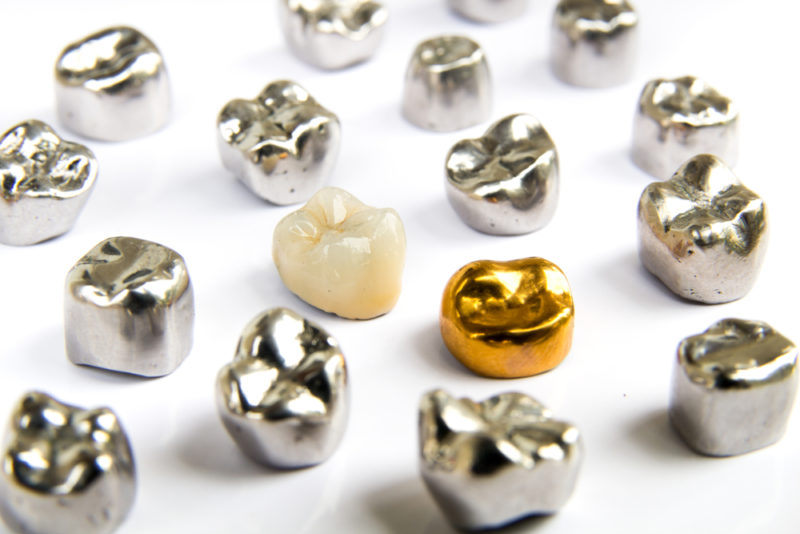
As the name implies, crowns are a sort of hat that go over the top of an existing tooth. They are single units used for one or two teeth in need of repair. Bridges are actually three or more crowns that are fused together to replace missing teeth.
There are many reasons why a crown is a good choice for restoring and maintaining your smile. The most common reasons for needing a crown include:
- Large amounts of tooth decay that are too big for a filling(s).
- To replace silver and composite fillings.
- To preserve a tooth that has been treated by a root canal.
- To repair stress fractures on and in teeth.
- To repair a broken and/or chipped tooth.

Cosmetic dentistry is about more than just repairing the damage done to your teeth through time, lifestyle, or diet – it’s about making your smile a reflection of what you feel inside. Whether you’re looking for restorative cosmetic dental work or an elective procedure to gain more confidence in your smile, the result can be a boost to your physical and emotional health. Like veneers, crowns and bridges are an excellent way to restore misaligned teeth, repair small gaps, and make your teeth resistant to future problems associated with heavy chewing and staining agents. However, their function is not only to make your smile more complete, as crowns and bridges are often used to repair fractured teeth, severely decayed teeth, or damage due to trauma.
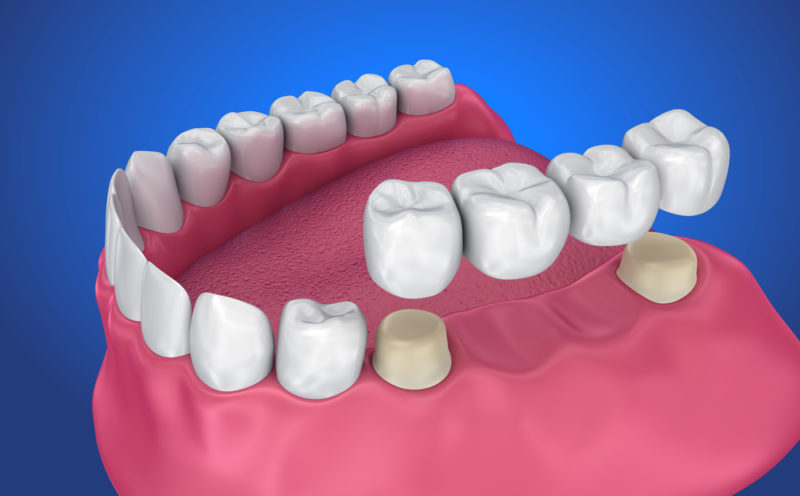
A tooth is prepared for a crown by shaving away a very small portion of enamel and cementing a gold, porcelain-fused-to-metal, or all-porcelain or ceramic crown over the natural tooth structure. A bridge is prepared in much the same way; however, instead of preparing just one tooth, two or more teeth on either side of the gap are shaved and readied for a bridge to be cemented.
When you choose experienced doctors and highly-skilled lab professionals, every one of your crowns can be made to your specifications. This includes everything from shaping and fitting them to your unique tooth anatomy to making them in any shade to match your smile.
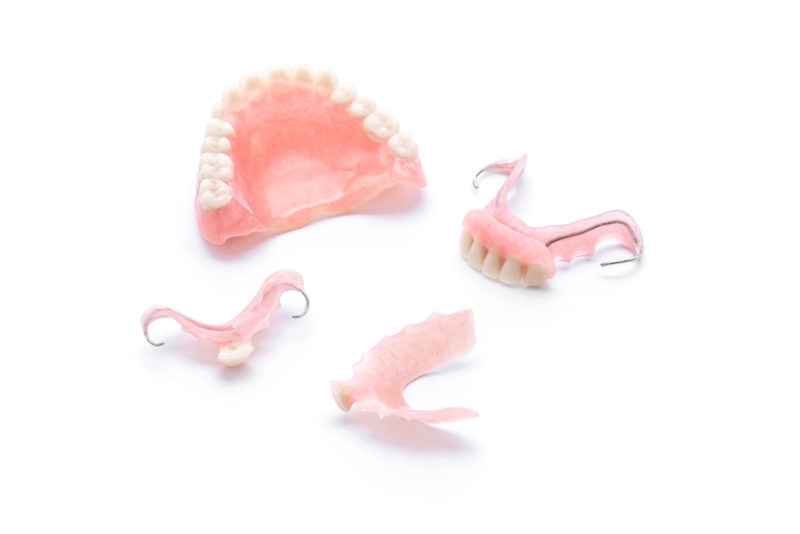
Dentures and partial dentures are used to give you teeth where teeth are otherwise missing, yet needed for chewing and talking properly. While dentures and partial dentures do not give you the full chewing capability you experienced with your natural teeth, they are designed to align naturally with the opposing teeth (whether they be another denture or your natural teeth) to create the best fit possible.
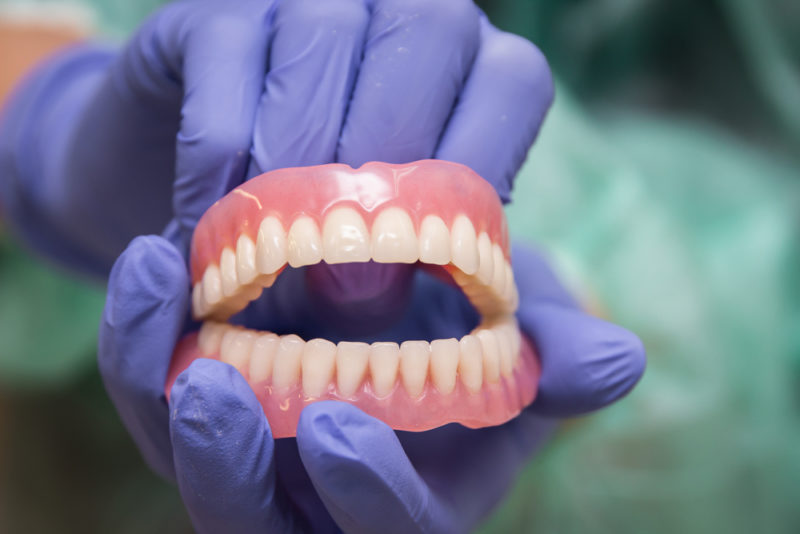
Dentures and partial dentures are used to replace missing teeth when implants are not an option. In the past, the loss of teeth signaled a decline in health that could rarely be reversed. After all, it is important to all humans to eat and, therefore, to have a means of chewing their food. Fortunately, dentures and partial dentures create an option for eating, speaking, smiling, and overall living a more normal, active life.
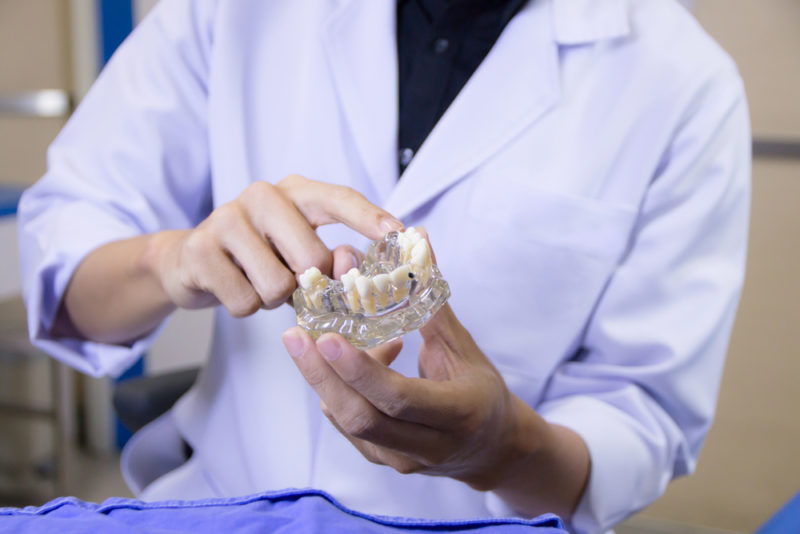
Almost all dentures are made from a natural-looking pink acrylic inset with either porcelain teeth or acrylic resin teeth. Full dentures are custom-made to the shapes and contours of your tissue and are designed to fit snugly on either your palate or the mandible ridge. Partial dentures can only be used when there are other stable teeth in your mouths arch for use as an anchor. Your dentist will work with you to determine which of these solutions is right for your unique situation.
While there are several steps that need to be taken prior to receiving your final dentures, the results are almost universally life-changing. Now there are even Esthetic Dentures, which are crafted by artist-like denturists who are trained to create removable teeth that make it nearly impossible to know you are wearing dentures when you smile.
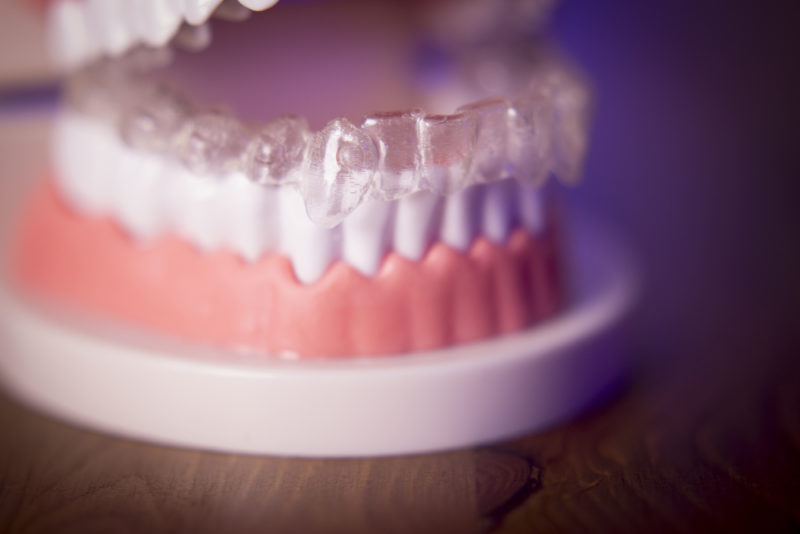
Orthodontic treatment remains one of the most effective ways to create a straight and beautiful smile. In reality, there are very few people born with the straight, perfect teeth that are seen in movies and on television, yet it remains the ideal outcome for virtually everyone’s look. No matter what your age, orthodontics* can help create the smile most people dream of.
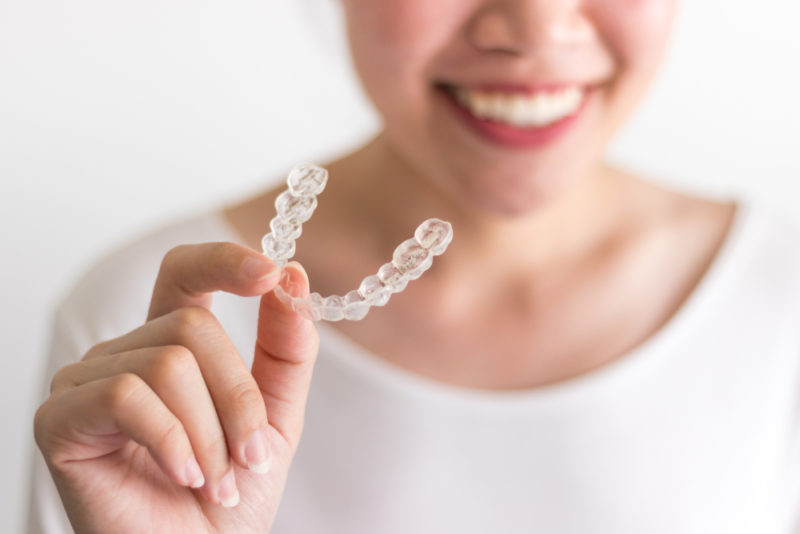
Regardless of which treatment course is chosen for you, orthodontic treatment can take anywhere from 12-24 months, and sometimes longer depending on the amount of tooth movement that is necessary. Treatment is accompanied by periodic orthodontic appointments for adjustments throughout the course of treatment.
Despite this time investment, almost everyone agrees that the outcome is well worth the wait. Your new smile will last for decades and reflect the image you desire.
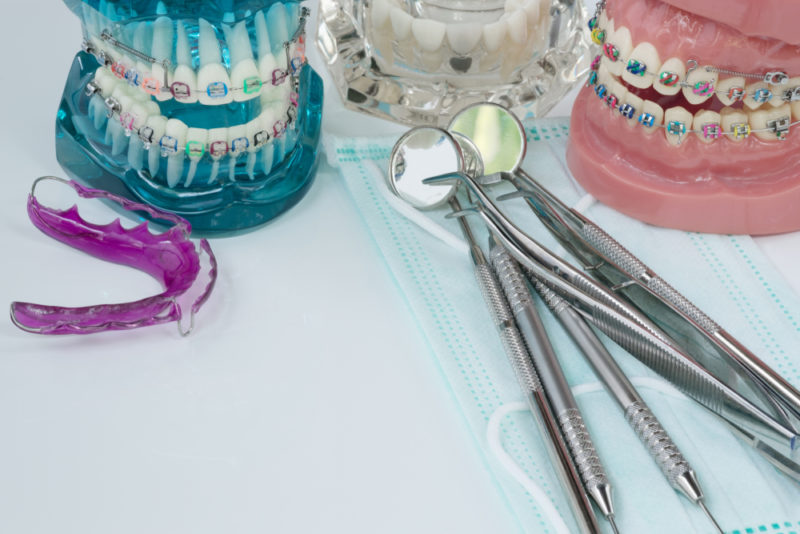
Orthodontics is a specific area of dentistry which deals closely with the prevention and treatment of misaligned or crooked teeth. The main objective in orthodontic* treatment is to give you an ideal bite, meaning all of your teeth line up to feel and look their best.
There are different ways to correct your bite and get straight teeth. The most common way to correct teeth is by using a fixed appliance, or braces. With braces, brackets are bonded to your teeth to hold wires and bands, which then help shift the teeth into the correct position through gentle and steady pressure.
A new development in technology provides another, more aesthetic means of straightening teeth. Invisalign is an orthodontic* appliance made from a hard, clear acrylic that fits over your teeth (much like a retainer or whitening tray) and is worn 22 hours per day. A new appliance is typically given every two weeks as the teeth become straighter. The advantages of Invisalign are not only evident in its nearly invisible appearance, but also in your ability to remove the aligner to eat with ease and maintain good oral hygiene
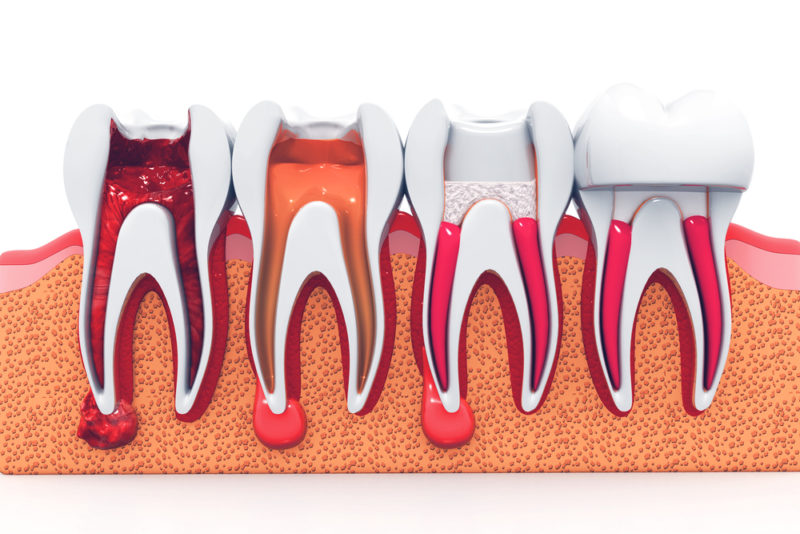
Root canal treatment is the process of cleaning out the infected nerves (pulp) from a dead or dying tooth, allowing you to keep the tooth and hence retain the structure of your bone while being freed from any pain or irritation associated with that tooth.
There are many symptoms that are indicative of when a root canal is needed, which vary from person to person. The most common indication of a dying tooth is an abscess at the apex of the root. Abscesses can only be detected with an x-ray. In the absence of an abscess, there are other tests that can be done to determine whether a root canal is needed to eliminate pain in a tooth.

Root canals are one of the most feared treatments in the dental field. Almost everyone has heard a horror story or is otherwise convinced that root canals are a last resort option. Fortunately, most of these are myths. Thanks to today’s technology, there are many advances in dentistry that allow you to undergo a comfortable experience even when having a root canal.
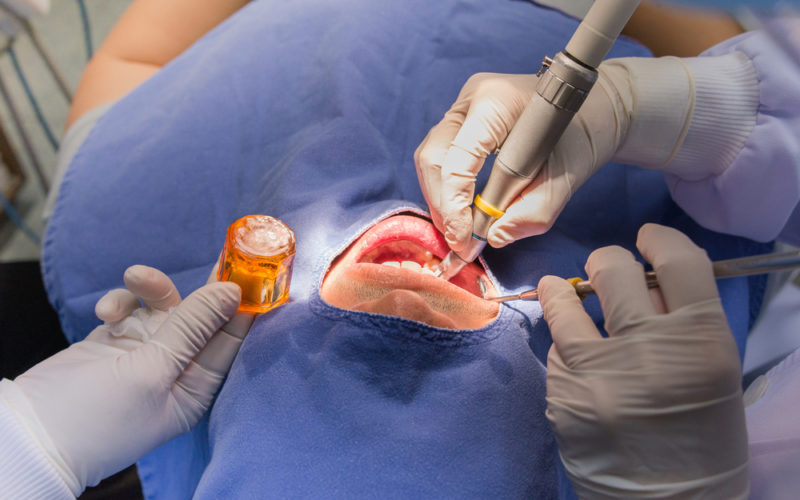
Performing a root canal is the most tedious of all dental procedures, and therefore may require a longer dental appointment. However, since dentists always use local anesthetic to numb the area, pain is eliminated throughout the procedure (alternative sedation options are available for those with additional concerns). Antibiotics are generally given to patients either before or after the procedure to facilitate the healing process.
Once the nerve of the tooth is removed, the overall structure of the tooth is weakened, much like the shell of a hollow egg. It is important to have a crown placed over a tooth soon after it is treated with a root canal to protect the tooth structure and keep it from splitting or fracturing.

Coffee, tea, wine, dark foods, and age are the main causes of teeth staining. They can cause everything from a slight yellowing of the teeth to dark spots, which can cause feelings of embarrassment or self-consciousness.
The current methods of whitening teeth range from using a store-bought kit to custom-made kits. There are also in-office whitening options for a quicker, more intensive and lasting result.
With in-office whitening, a gel is placed on your teeth. Depending on the system being used, a special heat light or a laser is then used to activate the whitening gel. The entire process takes approximately 2 hours from start to finish, although those with severe staining may require more than one appointment to achieve the desired effects.
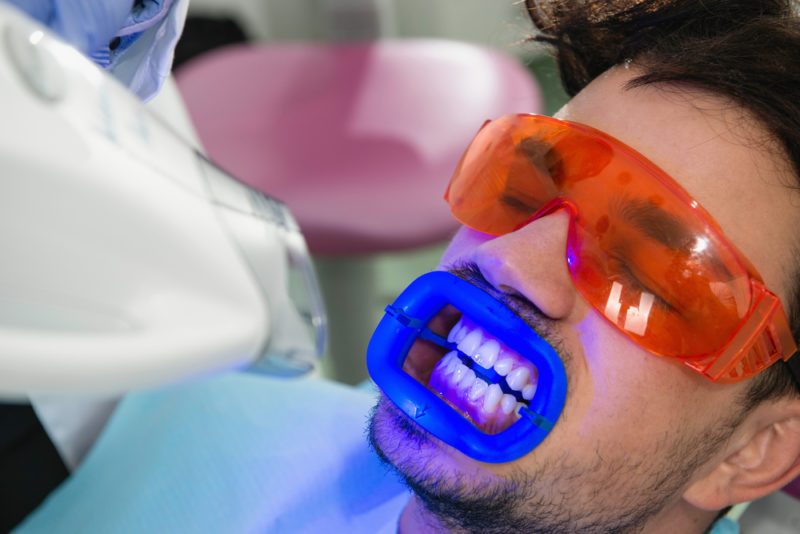
While store-bought whitening kits are popular, they are rarely effective enough to change your smile for longer than a few weeks at a time. However, its not only possible, but easy, to get the white smile you desire with an on-site tooth whitening option, or with a take-home kit designed with professional results in mind.
Although slightly more costly than the store kits, professional whitening is the best choice if you’re serious about making a change. After all, bright, beautiful teeth can change the way you look at yourself and the confidence you have in your smile.
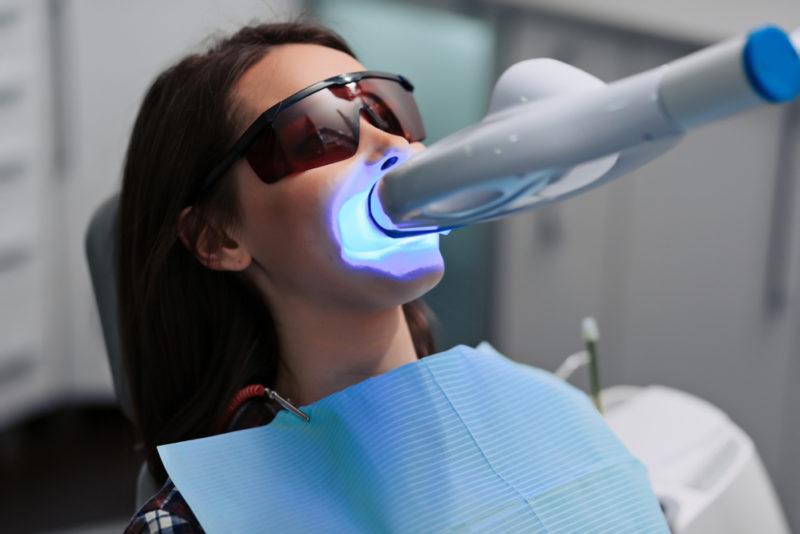
Everyone wants a Hollywood smile and with good reason. After all, a smile affects your relationships and has a lasting impression on your self-image. When your smile is bright and beautiful, you are more likely to use it. For many patients, creating a smile that makes you feel more confident is simply a matter of getting their teeth whitened.
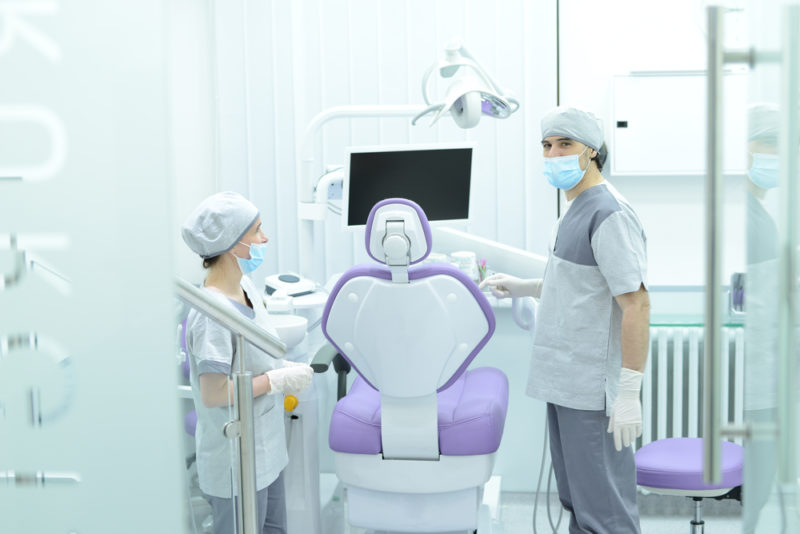
A painful or abscessed tooth is one of the most uncomfortable experiences there is. Oral problems can make eating, drinking, talking, sleeping, and even breathing painful. That’s why emergency dental procedures are a firm component of the services offered by any reputable dental office.
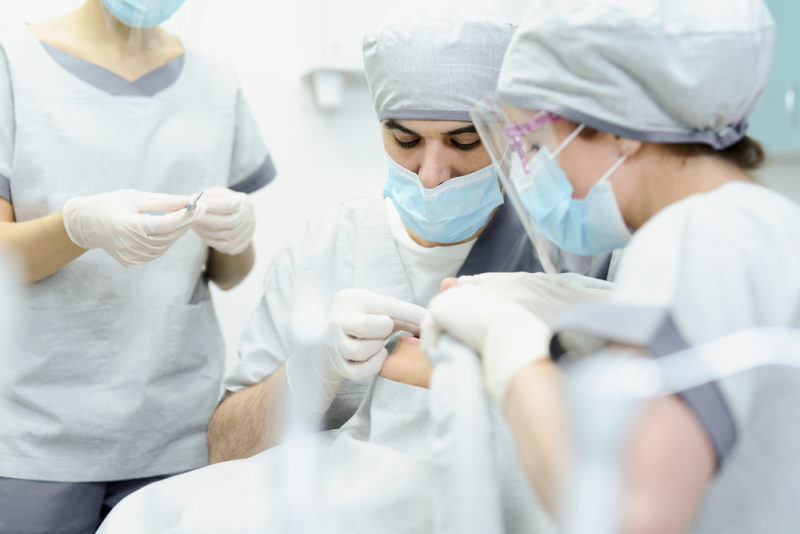
A painful or abscessed tooth is one of the most uncomfortable experiences there is. Oral problems can make eating, drinking, talking, sleeping, and even breathing painful. Thats why emergency dental procedures are a firm component of the services offered by any reputable dental office.

It all starts with a phone call. The first step in taking care of a toothache is a visit to the dental office to determine the source of the pain. Many times the best way to make a diagnosis is to take an x-ray, which allows an in-depth look at what is happening in areas that cannot otherwise be seen by looking in the mouth.
Once the source of the pain is identified, the dentist will present to you the best course of treatment to get your pain under control as quickly and easily as possible. However, if you or your loved ones feel that an emergency is life threatening, do not hesitate to call 911 or visit an emergency room. Your health is the most important thing.
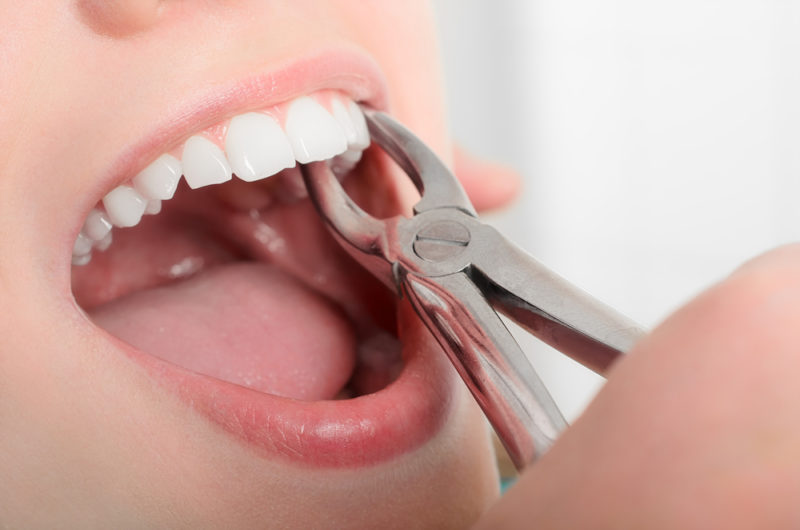
An extraction is the process of removing a tooth or piece of root from the oral cavity. The most common type of extraction is the removal of the wisdom teeth. Most people have their wisdom teeth extracted when they are teenagers or young adults. These teeth often erupt horizontally, creating pressure and pain on the teeth in front of them, which can eventually lead to an infection and/or crooked teeth.
Another reason a person may have teeth extracted is as a precursor to orthodontic treatment. Dentists may recommend certain teeth be removed as part of their overall plan to create more room in the mouth to straighten the other teeth.
In most other cases, primarily among adults, teeth must be extracted due to decay or a trauma to the jaw. When a tooth has an extensive amounts of decay or has a fracture line that reach down to the root, the tooth is no longer salvageable and must be taken out to keep an infection from developing and spreading into the jaw.
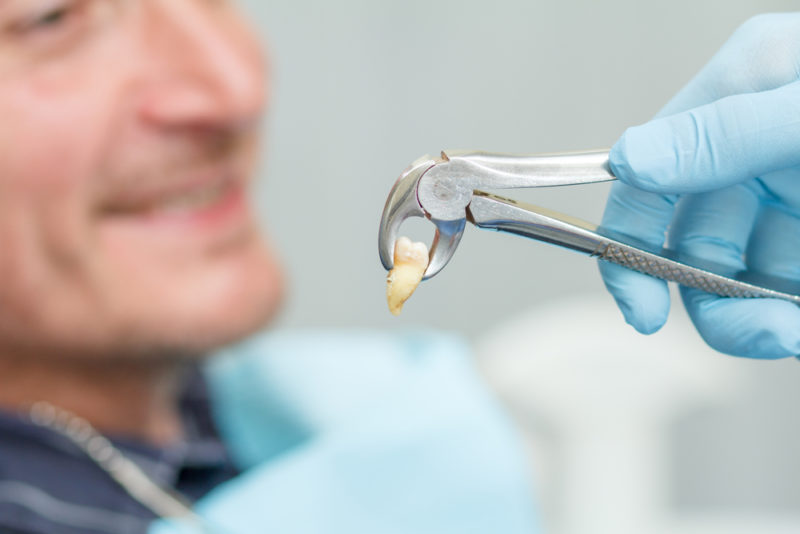
The most difficult part of the extraction procedure is making sure that all options to save the tooth have been considered. Before your dentist performs an extraction, be sure they have discussed with you all these options. If an extraction is the only alternative, the procedure itself is quite simple. While extracting impacted wisdom teeth is a bit more involved, the extraction of a tooth that is already erupted in the mouth is generally a quick procedure once the area is completely numb. With the right anesthetic and instruments, it is also painless.
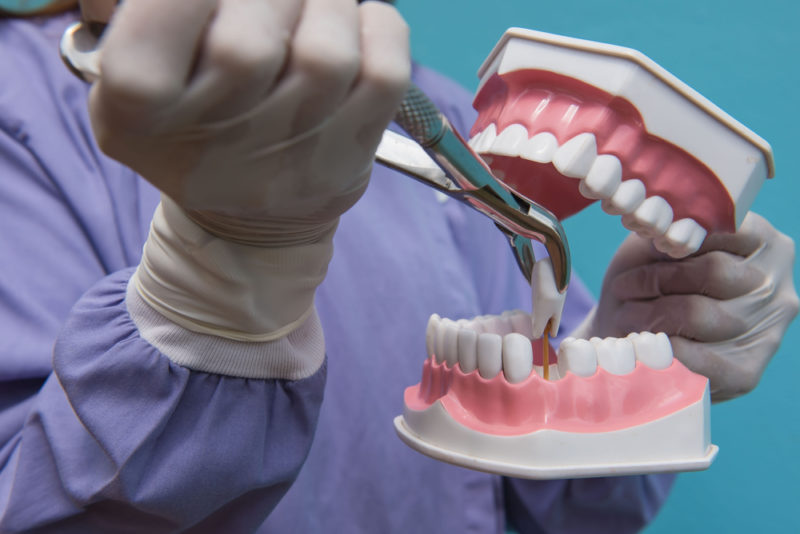
While most dentists will do anything possible to save a tooth, it is not always possible. Extractions are sometimes the only treatment that can be done for a tooth that has is a deep stress fracture, a substantial amount of decay, or is severely broken.
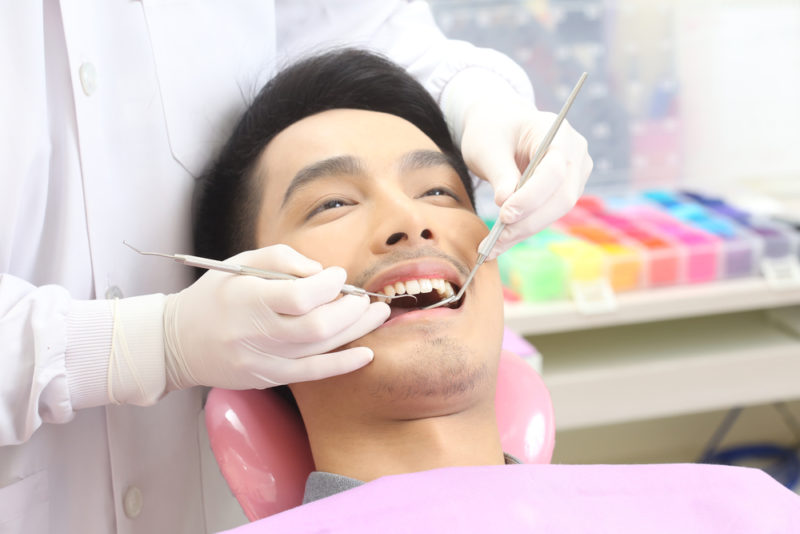
While regular brushing and flossing can minimize plaque (the white film on the surface of the teeth), most people have hard to reach areas that are frequently missed with routine home care. Plaque that remains on the teeth over time will calcify and become a hard deposit (calculus) that can no longer be removed at home. These hard deposits are located and removed when you have your teeth professionally cleaned.
If plaque and calculus are not removed, it causes the gum tissue to become inflamed (indicated by bleeding) and can eventually cause the bone that holds the teeth in place to go away. When this happens, periodontal disease has set in, and you may begin to develop additional health concerns.
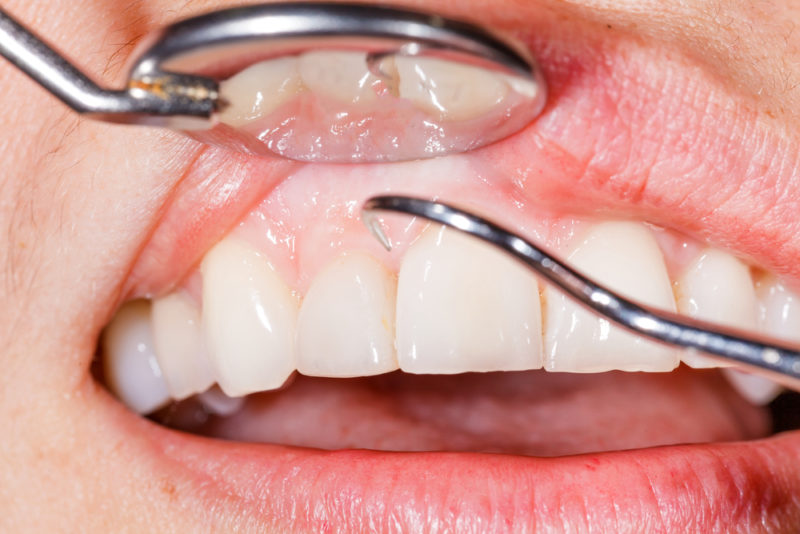
Regular teeth cleaning appointments are not just about keeping your smile bright and clean. Cleanings are necessary to keep your gum tissue and the structure of your teeth healthy.
Lack of routine cleaning appointments can contribute to the development of periodontal disease. When periodontal disease is not treated it can eventually develop into more dangerous health problems, including heart disease.
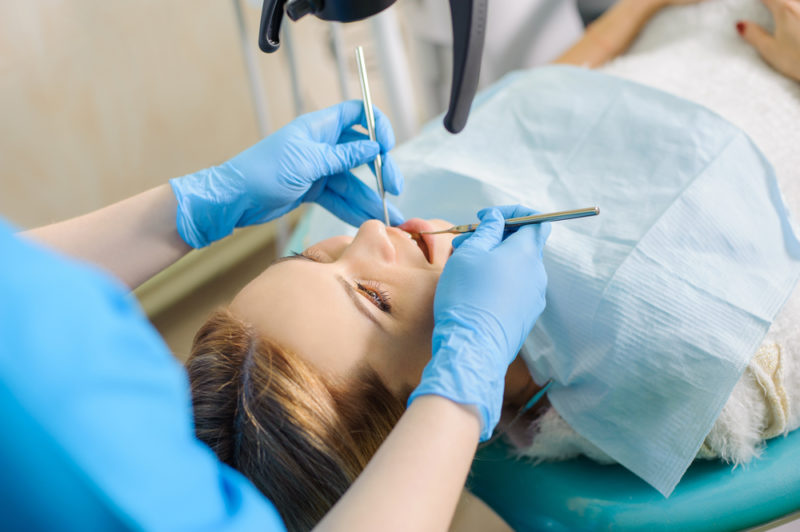
When you visit the dental office for a regular check-up, your hygienist or dentist will take measurements of the gum tissue around your teeth. This is the process of evaluating whether you have periodontal disease. Measurements between 1-3 mm are considered to be healthy, while measurements exceeding that may be an indication of periodontal disease. If periodontal disease is diagnosed, a treatment plan is generally presented at that point by either your hygienist or the dentist.
Periodontal disease has several stages. How many appointments needed to treat the condition is determined based on how advanced the disease has become. Generally, it may take up to 4-6 appointments.
Research has proven that oral hygiene is directly related to a person’s overall health. Routine cleaning appointments are essential to maintaining good oral hygiene and a healthy mouth. It is recommended that you have a professional cleaning at least every 6 months. However, some patients are advised to go more often, depending on their oral hygiene habits and/or their past history of periodontal disease.

Regular bad breath, or halitosis, is caused by bacteria inside your mouth. Most of the odors caused by these bacteria disappear for a time when you brush and floss. However, if you have periodontal disease, the bacteria can live in the deep spaces (pockets) between the gum tissue and tooth, where neither the toothbrush nor the floss is able to reach. This means that no amount of brushing can rid you entirely of your problem.
Periodontal disease is not the only thing that can cause bad breath. Smoking is one of the worst sources of halitosis because the nicotine coats your teeth, tongue, cheeks, and gums, providing an additional surface for the bacteria to adhere to. There are also some medications that can cause your saliva to dry out. Without saliva to flush your mouth, the bacteria can hang around more, and in turn cause you to have bad breath.

Although drinking plenty of water and chewing sugarless gum may help to keep the saliva flowing, regular dental check-ups and cleanings are vital to helping keep your mouth clean and healthy.
Most dental professionals can determine the source of your bad breath and help you to keep it away permanently. After all, keeping bad breath away is important not only because of the health repercussions, but because it can affect everything from your self-esteem to your personal life.
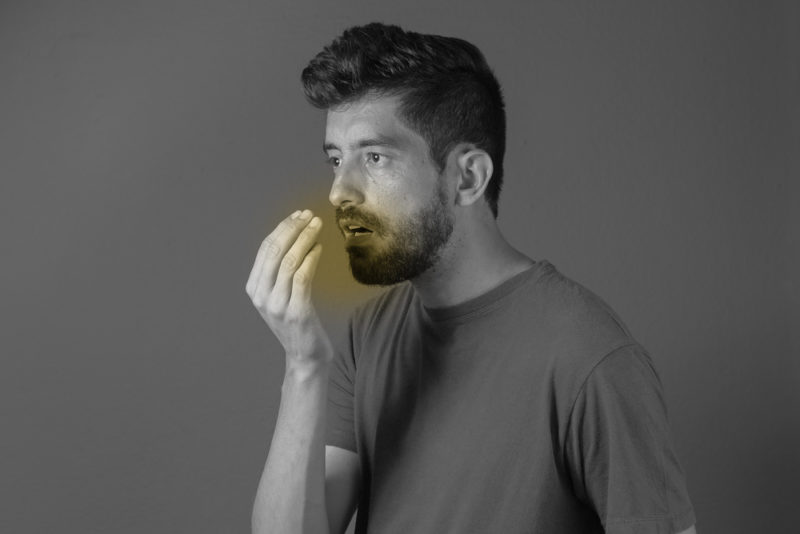
Bad breath is often about much more than occasionally eating the wrong foods. Although foods such as garlic, onions, coffee, soft cheeses, and fish can certainly contribute to breath odor, constant and consistent bad breath is likely a signal of a more significant oral health problem.

Oral cancer can develop anywhere in the mouth and/or throat. It usually begins on the floor of the mouth, tongue, or lips, and then moves on to the rest of the body. Although oral cancer is often detected by a dental professional before any symptoms occur, it is best to schedule an appointment with your dentist as soon as possible if you have any of the following:
- Sores in the mouth that do not heal.
- Lumps or swelling inside the mouth, on the neck, or on the lips.
- White lesions and/or rough lesions in the mouth or on the lips.
- Numbness.
- Difficulty speaking, chewing, or swallowing.
- Repeated bleeding in a concentrated area of the mouth.
- Loose teeth.
- Pain when swallowing.
- Earaches.

It is important to choose a dentist that is vigilant in his or her watch for oral cancer. When you have your six-month cleaning or regular check-up, your dental team should look at several areas for signs of oral cancer. Exams should include looking carefully at the roof and floor of the mouth, the back of the throat, the tongue, your lymph nodes, and the insides of the cheeks and lips. Your exam should also include the use of the Vizilite Plus prescreening exam.
Most dentists are fully trained to perform biopsies in your mouth if oral cancer is suspected. In the event of a positive biopsy, you may receive a full range of support and referral services, helping you to choose the treatment options that are best for you and putting you in touch with the best medical professional for additional treatment.
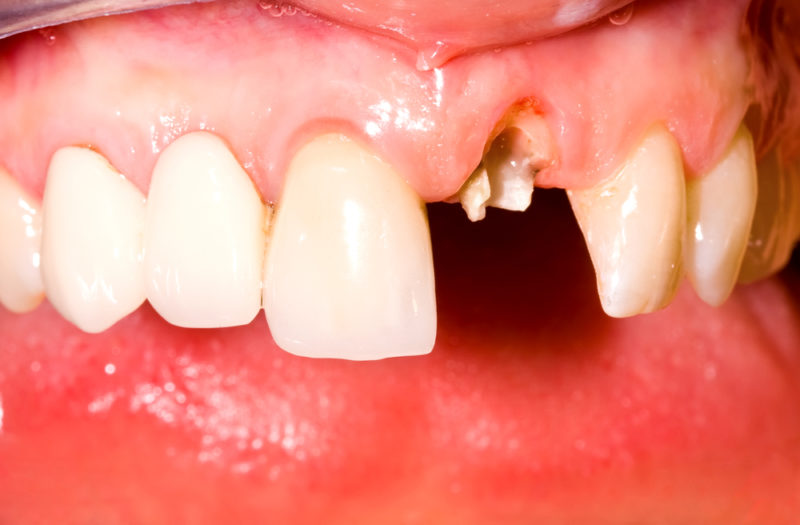
Did you know ONE PERSON DIES EVERY HOUR FROM ORAL CANCER in the United States, and the mortality has remained unchanged for more than 40 years? Late detection of oral cancer is the primary cause that both the incidence and mortality rates of oral cancer continue to increase. As with most other cancers, age is the primary risk factor for oral cancer. Though tobacco use is a major predisposing risk factor, 27% of oral cancer victims have no lifestyle risk factors.
Attention all Women… According to the American Cancer Society, more women in the United States will be diagnosed with oral cancer this year (12,000 cases) than will be diagnosed with cervical cancer (less than 10,000 cases), and there are as many cases of oral cancer caused by the human papilloma virus (HPV 16/18), a sexually transmitted disease, as there are HPV-related cases of cervical cancer.
Early detection happens at your dental office… Clinical studies have determined that using ViziLite Plus, a special dye used in the mouth, improves the dental professionals ability to identify and evaluate suspicious areas at their earliest stages. Early detection of pre-cancerous tissue can minimize or eliminate the potentially disfiguring effects of oral cancer, and possibly save your life. Proven screening technologies such as mammograms, Pap smears, PSA and colonoscopies, offer the same type of early detection of cancer. ViziLite Plus is an easy and painless examination that gives you the best chance to find any oral abnormalities you may have at the earliest possible stage.
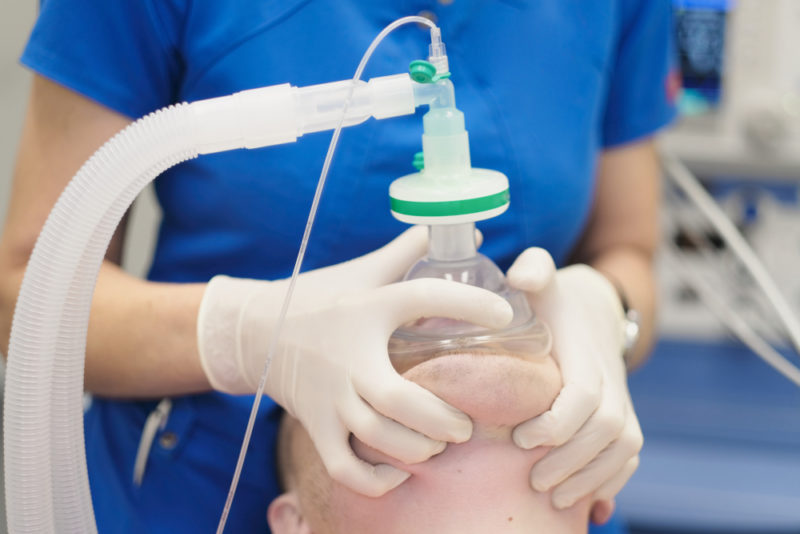
Sedation dentistry is performed by administering agents designed to put you at ease during your procedure. Ranging from complete unconsciousness to pain and anxiety maintenance, sedation dentistry helps you to get past any feelings of apprehension to get your dental work done painlessly, quickly and effectively.
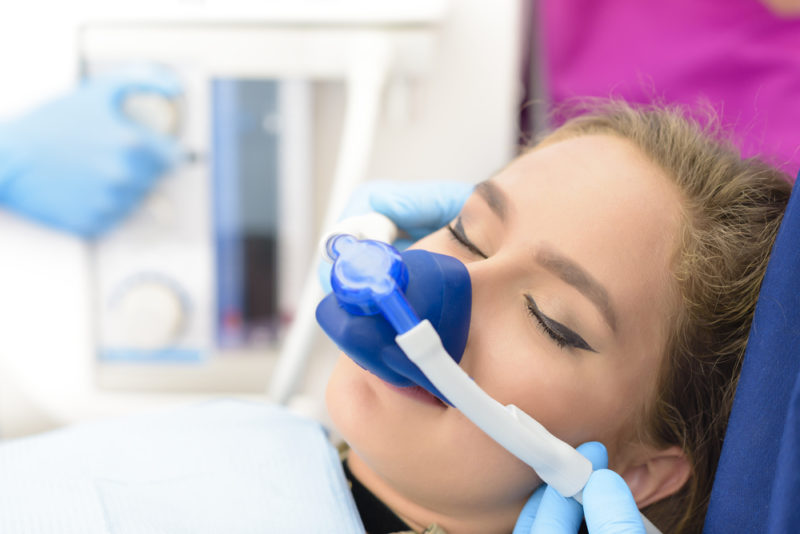
Depending on what treatment you are having done on your teeth, your dentist may offer a form of sedation to help you relax. There are a variety of different methods of sedation, ranging from pills, liquids, or gases, to put you at ease and streamline the process of getting dental treatment done.
For more simple procedures, nitrous oxide gas (more commonly known as laughing gas) can simply be breathed in before and during your treatment. This will keep you awake during your treatment while still allowing you to reduce the amount of anxiety you feel. When the treatment is complete, a few minutes of breathing pure oxygen will bring you right back to normal awareness levels with no lasting side-effects.
More intensive procedures might call for sedation medication to be taken just before the appointment. Most often coming in the form of Valium or other common drugs, these allow you to sleep through the procedure. You are generally asked to come in with another person who can drive you to and from the appointment, since your awareness level will remain inhibited until the medication wears off.
Additional options are available if these aren’t right for you. Be sure to talk with your dental team about any fears or anxieties you have. Dont let it keep you from taking care of your teeth and/or tending to your overall oral health. Most dental professionals recognize the reality of fears and phobias, and can treat them accordingly.
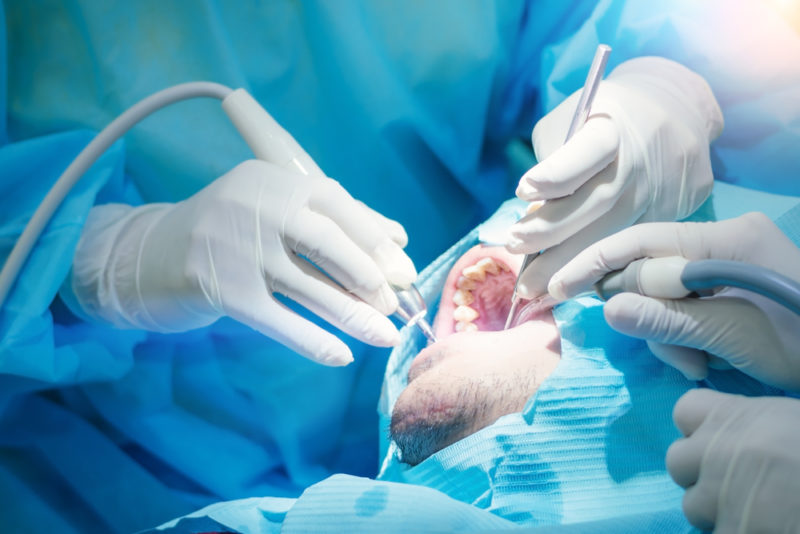
For people of all ages, dental offices and dental visits can come with fears of enormous proportions, including a phobia that is difficult to explain. Research shows that most people are at least partially anxious to go to the dentist, even if the procedure is as simple as a routine cleaning. Although there is no magic solution that can make someones fear vanish, there are many ways to reduce anxieties, allowing even the most phobic persons a positive experience at the dental office.
$100 OFF!
New Patient Special
Search For Another Great Local Dentist
For trusted neighborhood dentists, use the search feature above or call us at 602-883-2595